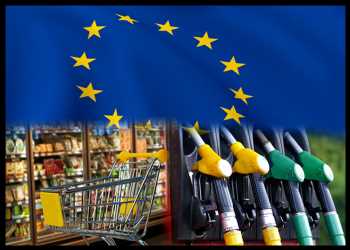Eurozone Q3 GDP Growth Slowdown Confirmed
Euro area economy expanded at a slower pace in the third quarter and employment growth slowed as runaway inflation and rising interest rates damp economic activity in the single currency bloc, latest figures from Eurostat showed Tuesday.
Gross domestic product grew a seasonally adjusted 0.2 percent from the second quarter, when the Eurozone economy expanded 0.8 percent.
The EU GDP also rose 0.2 percent sequentially in the September quarter after a 0.7 percent growth in the previous three months.
Compared to the same quarter last year, Eurozone GDP grew 2.1 percent in the third quarter following a 4.3 percent expansion in the previous three months.
Annual growth in the EU slowed to 2.4 percent from 4.3 percent.
All figures were in line with the flash estimate released on October 31.
Based on the available data, Cyprus and Romania logged the strongest quarterly GDP growth rate, 1.3 percent, among EU member states.
Meanwhile, economic output shrank in Belgium, the Czech Republic, Latvia, Hungary, the Netherlands, Austria, Slovenia and Finland.
None of the EU states entered a technical recession, which is defined as two successive quarters of output contraction.
That said, economists expect further shrinkage in GDP in the final three months of the year as households and businesses try to cope with the winter that is set to be made harh by the soaring energy prices.
Eurostat also reported that employment grew a seasonally adjusted 0.2 percent sequentially in the third quarter, in both the euro area and the EU. In both regions, the pace of growth slowed from 0.4 percent logged in the previous three months.
On a year-on-year basis, employment in the euro area increased an unadjusted 1.7 percent in the third quarter versus 2.7 percent in the three months to June.
In the EU, annual growth in employment slowed to 1.5 percent from 2.4 percent.
Separately, Eurostat released the external trade data for September on Tuesday that revealed the growth in imports out-pacing that of exports, causing the trade balance to swing to a deficit from a surplus last year.
Exports of goods to the rest of the world rose 23.6 percent year-on-year and imports from these countries surged 44.5 percent.
The euro area trade account logged a deficit of EUR 34.4 billion in September versus a surplus of EUR 6.7 billion in the same month last year.
With Eurozone, trade grew 27.3 percent year-on-year in September.
On a seasonally adjusted basis, exports increased 1.6 percent from the previous month in September, while imports decreased 2.0 percent. The seasonally adjusted trade deficit narrowed to EUR 37.7 billion from EUR 47.6 billion in August.
Source: Read Full Article

